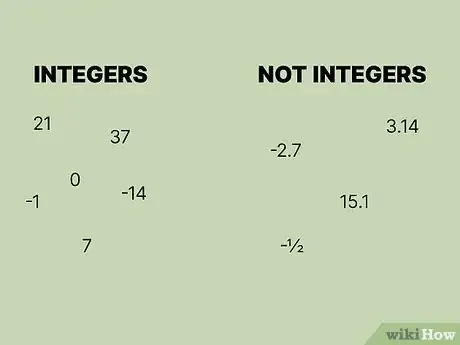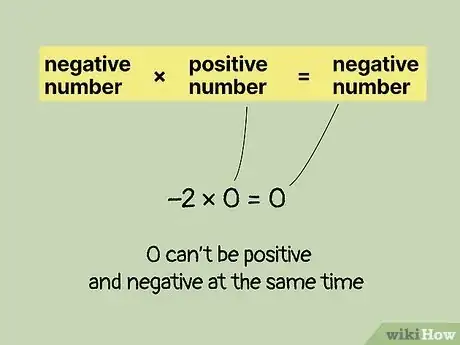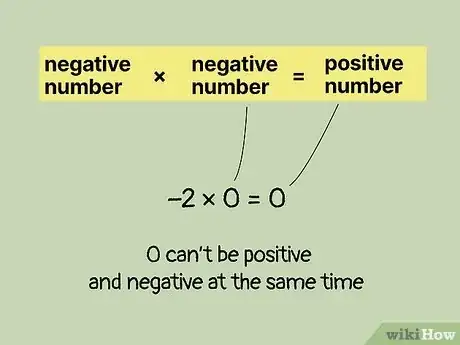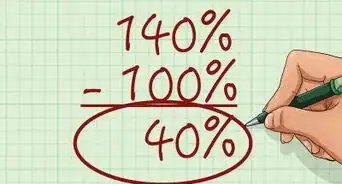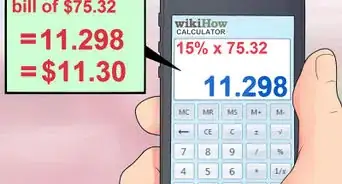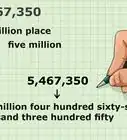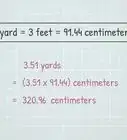This article was co-authored by wikiHow staff writer, Johnathan Fuentes. Johnathan Fuentes is a writer based in the New York City region. His interests as a writer include space exploration, science education, immigration, Latinx cultures, LGBTQ+ issues, and long-form journalism. He is also an avid hiker and has backpacked in Alaska and Newfoundland, Canada. A son of Cuban immigrants, he is bilingual in English and Spanish. Prior to joining wikiHow, he worked in academic publishing and was a freelance writer for science websites. He graduated from Columbia University in 2021, where he studied nonfiction writing and wrote for the student newspaper. He is currently counting down the seconds until the release of Kerbal Space Program 2 in 2023—a game that will almost certainly take up what little free time he has.
This article has been viewed 3,505 times.
Learn more...
If you’re taking a math class, you’ll definitely encounter integers, as well as positive and negative numbers. But where does 0 fall within these categories? Is it positive or negative? Is it an integer or not? If these questions have you scratching your head, you’re not alone. 0 is an oddball in math, and categorizing it requires some extra thinking and creativity. This guide will help you understand exactly how 0 fits in with respect to positive and negative integers. Keep reading for a crystal clear explanation, plus a few examples to really bring these ideas home.
Things You Should Know
- Zero is an integer, but it’s neither positive nor negative. It’s the only number that’s not positive or negative.
- Zero is neither greater than zero nor less than zero. Therefore, by this definition, it’s neither positive nor negative.
- Zero is still an integer because it’s a whole number and doesn’t contain any fractional part. This means it contains no fractions or decimals.
- A positive integer is a whole number greater than zero, while a negative integer is a whole number less than zero.
Steps
Proof that Zero Can’t be Positive or Negative
-
1If 0 was positive, it would break the rules of multiplying negative numbers. Let’s use the example -2 x 0 = 0, assuming zero is positive. We know that -2 is a negative number. We also know that if we multiply a negative number by a positive number, the answer will always be negative.[3] Therefore, if we assume 0 is positive, then -2 x 0 should give us a negative answer. But the answer is 0, which we said was positive. This is a contradiction, which means our original assumption was incorrect.[4]
- Since a number can’t be positive and negative at the same time, we must assume that 0 is neither positive nor negative.
-
2If 0 was negative, it’d also break the rules of multiplying negative numbers. Let’s try -2 x 0 = 0 again, assuming zero is negative this time. We know that -2 is a negative number. We also know that if we multiply a negative number by another negative number, the answer will always be positive.[5] Therefore, if we assume 0 is negative, then -2 x 0 should give us a positive answer. But the answer is 0, which we assumed was negative. Once again, we have a contradiction. This proves that our original assumption was wrong.[6]
- A number can’t be negative and positive at the same time. Therefore, 0 is neither positive nor negative.
References
- ↑ https://mathworld.wolfram.com/Zero.html
- ↑ https://www.usf.edu/intousf/documents/math_vocabulary_and_common_symbols.pdf
- ↑ https://web.gccaz.edu/~johwd63181/MAT115/chapter1/text/Section%201.3.pdf
- ↑ https://www.ma.imperial.ac.uk/~buzzard/maths/teaching/18Aut/M1F/solns03.pdf
- ↑ https://web.gccaz.edu/~johwd63181/MAT115/chapter1/text/Section%201.3.pdf
- ↑ https://www.ma.imperial.ac.uk/~buzzard/maths/teaching/18Aut/M1F/solns03.pdf

